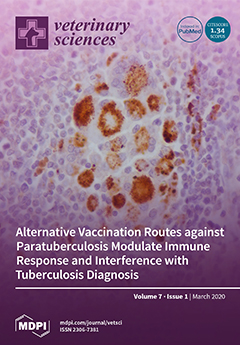The aim of this study is to determine the performance of a lab-made electronic nose (e-nose) composed of an array of metal oxide semiconductor (MOS) gas sensors in the detection and differentiation of
Listeria monocytogenes (
L. monocytogenes) and
Bacillus cereus (
B. cereus) incubated in trypticsoy broth (TSB) media. Conventionally, the detection of
L. monocytogenes and
B. cereus is often performed by enzyme link immunosorbent assay (ELISA) and polymerase chain reaction (PCR). These techniques require trained operators and expert, expensive reagents and specific containment. In this study, three types of samples, namely, TSB media,
L. monocytogenes (serotype 4b American Type Culture Collection (ATCC) 13792), and
B. cereus (ATCC) 10876, were used for this experiment. Prior to measurement using the e-nose, each bacterium was inoculated in TSB at 1 × 10
3–10
4 CFU/mL, followed by incubation for 48 h. To evaluate the performance of the e-nose, the measured data were then analyzed with chemometric models, namely linear and quadratic discriminant analysis (LDA and QDA), and support vector machine (SVM). As a result, the e-nose coupled with SVM showeda high accuracy of 98% in discriminating between TSB media and
L. monocytogenes, and between TSB media and
B. cereus. It could be concluded that the lab-made e-nose is able to detect rapidly the presence of bacteria
L. monocytogenes and
B. cereus on TSB media. For the future, it could be used to identify the presence of
L. monocytogenes or
B. cereus contamination in the routine and fast assessment of food products in animal quarantine.
Full article






